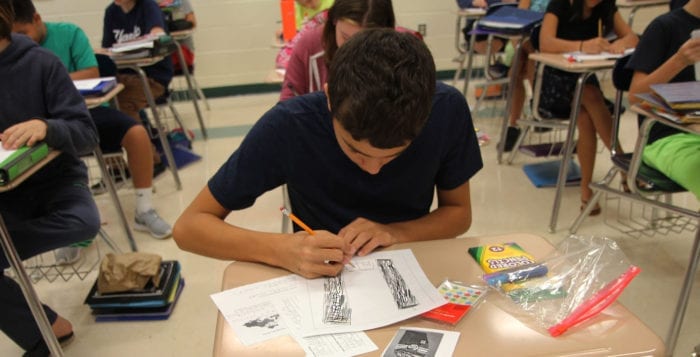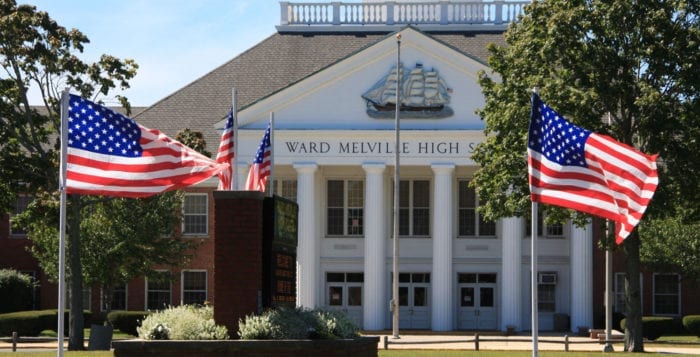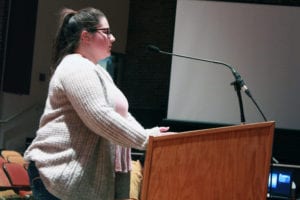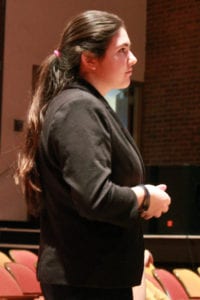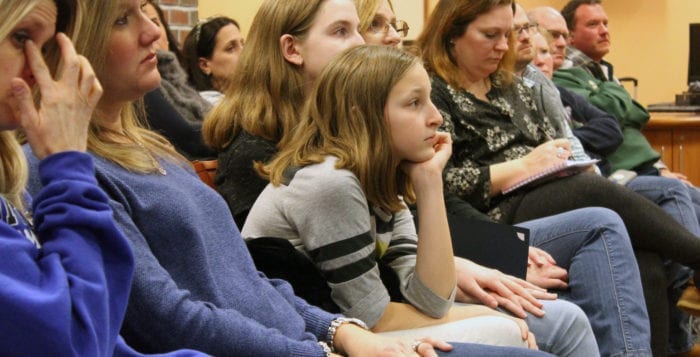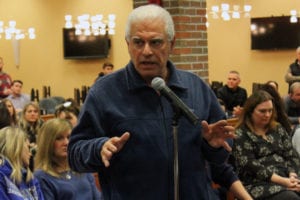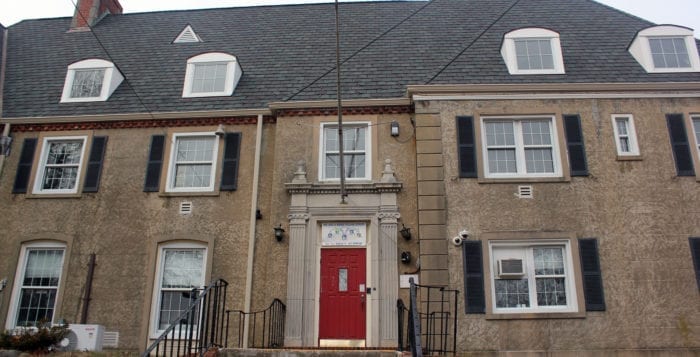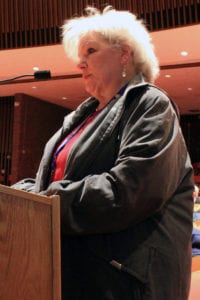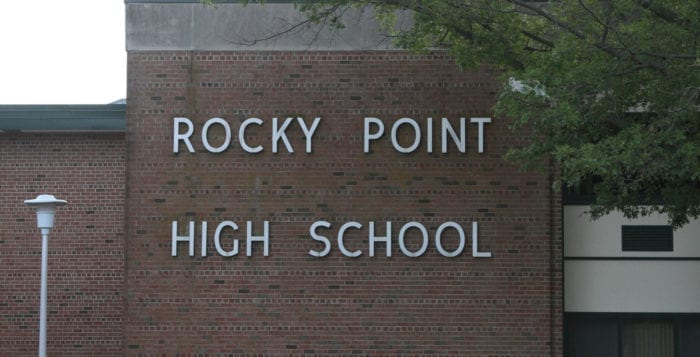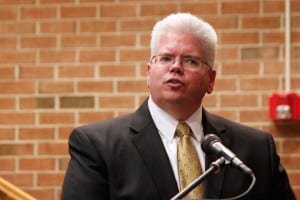By Kyle Barr
Shoreham-Wading River school district is asking students and staff to become the eyes and ears of the school with the introduction of the anonymous Report It app as part of the district’s increasing focus on school security.

“Last fall we started to look at different ways that students could report any safety or security issues they may have where they weren’t comfortable reporting in a regular venue,” Superintendent Gerard Poole said. “This was an anonymous way to let us know if there was something they know or to give us some advance notice of something that may be emerging.”
The Report It app allows students, teachers, staff or community members who access the website or download the app to anonymously report on any activity they think is suspicious to the school, whether its security or drugs related or even involving social media and cyberbullying.
Alan Meinster, the assistant superintendent for curriculum, instruction and assessment said at an April 18 board of education meeting each of the four district principals and administration will receive the tips and are responsible for checking up on any reports. The information in the report will then be monitored by the district main office.
“There are protocols they have to do involving investigating any information that is receive — all the principals will always follow the standard protocol, and part of that protocol is consulting with district administration,” Meinster said at the meeting.
The reports are monitored during regular school hours.
The app has been active in the district for approximately a month, but Poole said the district has yet to see any reports that have required action. Though Poole admitted that since reporting is anonymous there is potential for false reports, he believes students and staff understand the purpose and gravity of what this app means for the school.
“This was an anonymous way to let us know if there was something they know is emerging to give us some advance notice.”
— Gerard Poole
“We had a high school assembly where we were telling students how to use the app and what it was for, and I think the students took it very seriously as an option for them,” Poole said. “We haven’t had any false reports yet, and while there is potential for false reports it wasn’t enough of a concern for us not to implement it.”
Poole said that the school is not liable if they do not take action on any specific report.
The app is part of the district’s See It, Say It, Report It campaign to get students and staff active in being mindful of school safety. The app joins other security features that the district has implemented this year such as a visitor management system in all district buildings that scans licenses and prints out a tag with a person’s destination and photo. The district has also hired two more security guards for large gatherings as well arrival and dismissal during the school day.
The district is planning to implement more security features over the summer. Poole said the goal is for students to come back next year to new security vestibules and a student ID swipe-in system at the high school and Albert G. Prodell Middle School. The security features will be built with funds from the ongoing bond project.
“If you are going to encourage a student to come forward, which is not an easy thing to do, you have to provide mechanisms that are conducive to the culture.”
— Anthony Lavalle
Anthony Lavalle, executive director of Sayville-based Report It Inc., said that the app was designed for use in today’s technological age.
“If you are going to encourage a student to come forward, which is not an easy thing to do, you have to provide mechanisms that are conducive to the culture,” Lavalle said. “Even today if you think about it, a school shooting in Texas, school shooting in Florida, the concept is that students potentially know about these types of things, but they do not communicate them because of fear of some sort of retribution or retaliation.”
After the Feb. 14 Parkland, Florida, shooting, Lavalle said he’s seen a lot more interest from local schools in Report It as a means of enhancing security. A number of school districts on Long Island, including Half Hollow Hills, Plainedge, Lynbrook, Port Washington and Malverne have also signed on to using the app.
The application is web-based, but there is also an option for users to download it to their phone. Each school building’s webpage has a link that sends it to that specific building’s Report It page.
If logging into the app from the website, users will have to input five digits for reporting for Shoreham-Wading River schools. The code starts with “SWR,” with the last two letters being the school the user is sending it to, which are “HS” for the high school, “MS” for Albert G. Prodell Middle School, “MA” for Miller Avenue Elementary and “WR” for Wading River Elementary School.
School officials urge that if the report is an emergency, to immediately call 911 or contact emergency services.

